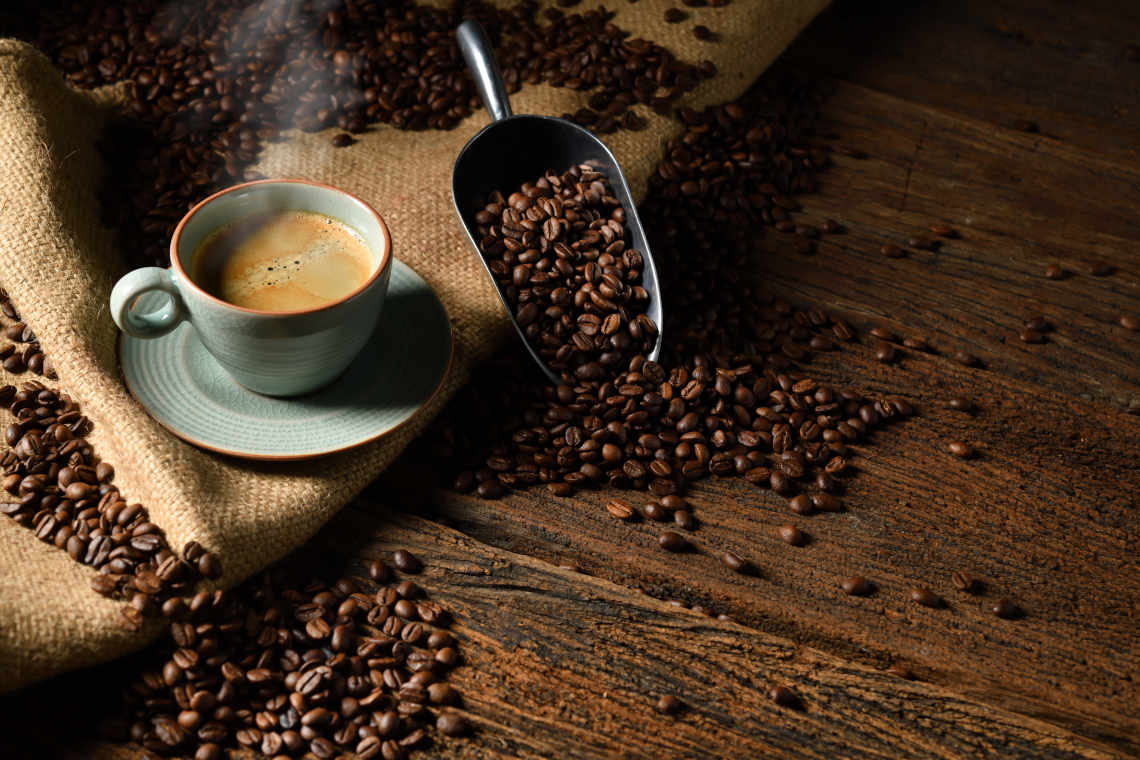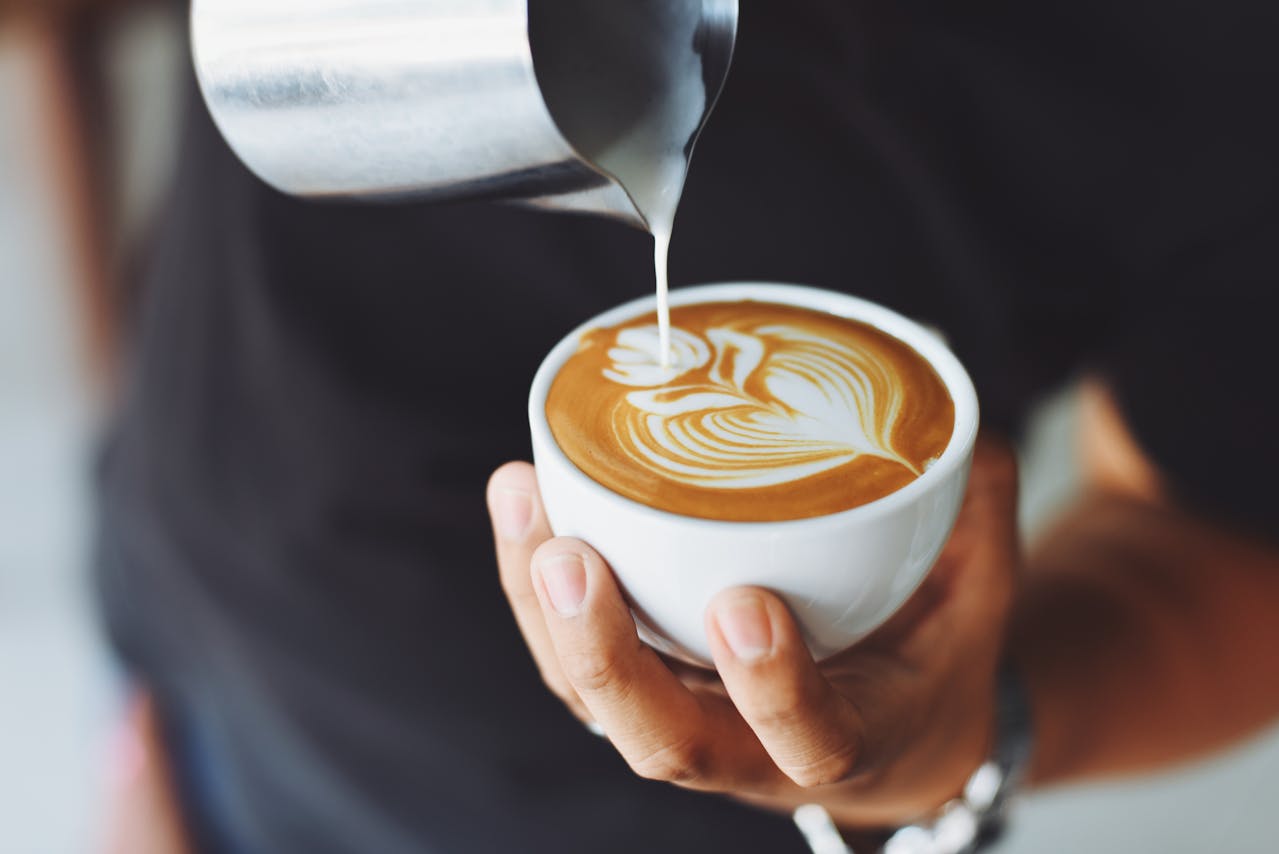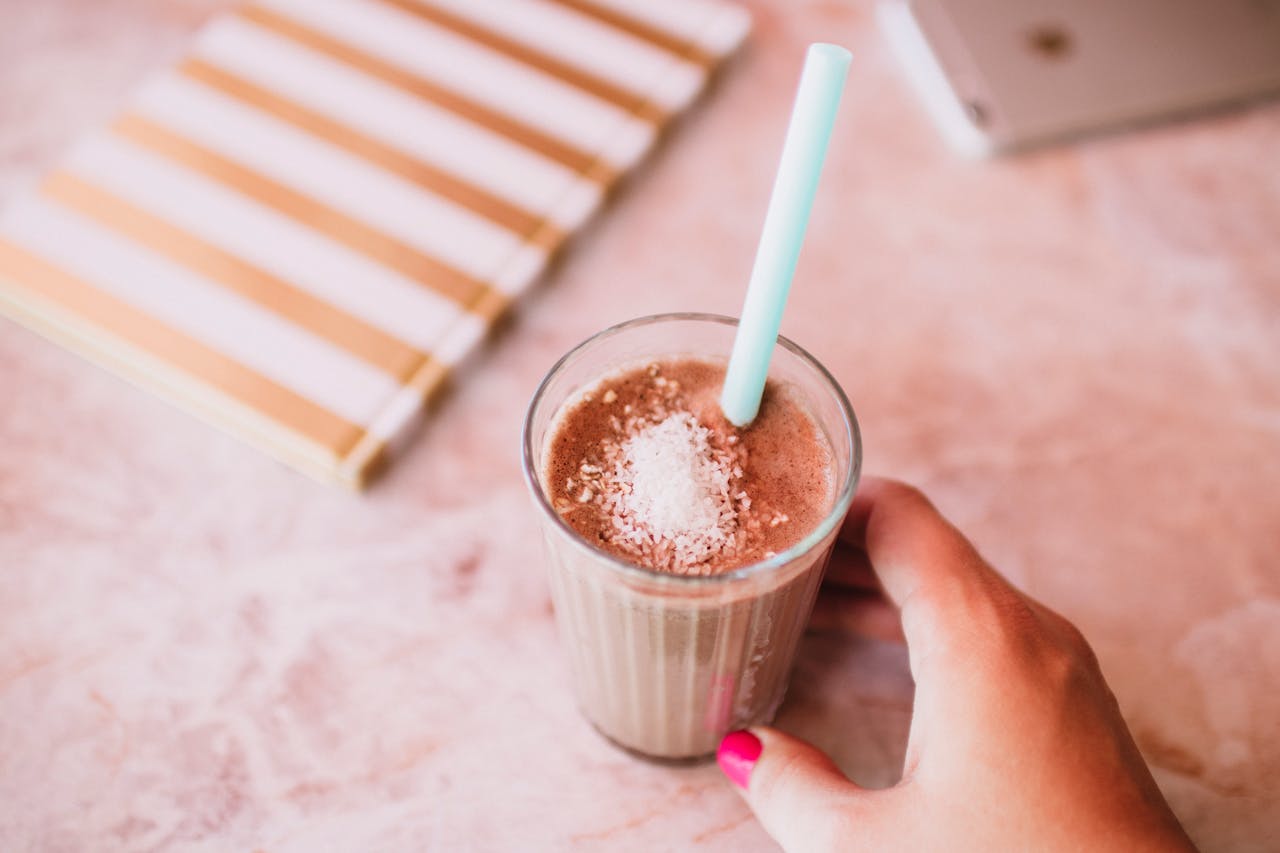コーヒーの味覚テスト

SIS International では、コーヒーの味覚テストは単に飲んで評価するだけではありません。コーヒーブランドの可能性を最大限に引き出すために設計された複雑なプロセスです。
弊社の包括的なテスト方法により、コーヒーの感覚体験を深く探究し、最初の香りから長く残る後味まですべてを評価します。この厳格な分析により、コーヒーのあらゆる側面が最高の品質と一貫性の基準を満たしていることが保証されます。SIS のコーヒー味覚テストでは、最高の風味を特定し、豆の起源からカップに至るまで、各豆の背後にあるストーリー全体を明らかにします。
コーヒーのテイスティングとは何ですか? なぜ重要なのですか?
Coffee taste testing isn’t some quaint ritual performed by bearded hipsters in flannel—it’s a merciless battleground where multimillion-dollar decisions live or die in the time it takes to slurp a tablespoon of liquid.
コーヒーの味覚テストは、コーヒーを厳密に味見して評価し、その品質、風味プロファイル、特徴を判断する構造化された評価プロセスです。コーヒーの味の各側面を体系的に評価するための一連の手順が含まれます。
Real coffee taste testing—not the Instagram-friendly charade most consumers mistake for evaluation—demands three brutally different frameworks operating in concert:
- Consumer Panels: Raw, unfiltered feedback from everyday coffee drinkers who couldn’t care less about “notes of bergamot and blackberry jam” but know exactly what makes them reach for a second cup. These panels cut through industry pretension with ruthless efficiency.
- Expert Cuppings: Q-graders and certified professionals who’ve spent thousands of hours calibrating their sensory equipment to detect flaws and virtues invisible to untrained palates. They don’t care about your feelings—they care about molecular reality.
- Blind Comparative Analysis: The great equalizer where fancy packaging, origin stories, and price points vanish into thin air, leaving nothing but liquid quality exposed to ruthless, uncompromising judgment. Brands that dominate this arena earn their success; the rest are just marketing companies that happen to sell coffee.
It answers the “why” behind the “what.” Most coffee consumers can’t begin to articulate why they gravitate toward certain bags, but their limbic system knows exactly what it’s doing. Proper methodologies extract these hidden truths like a dentist pulls teeth: precisely, effectively, and sometimes with uncomfortable results.
…しかし、コーヒーのテイスティングのメリットは何でしょうか?

コーヒーのテイスティングはコーヒーブランドにとっていくつかの利点をもたらします。ここでは、その主なメリットをいくつかご紹介します。
- 強化された品質管理: Brands can maintain a high-quality standard across all their products.
- 製品開発とイノベーション: これはイノベーションの基盤であり、ブランドが新しいブレンド、焙煎方法、豆を試すことを可能にします。
- 市場ポジショニング: Effective taste testing enables brands to position themselves strategically.
- 世界的なアピール: This taste testing is essential for brands looking to reach an international audience.
- 情報に基づいた意思決定: ブランドは、製品ラインナップについて十分な情報に基づいた決定を下すための知識を得ることができます。どのフレーバーが消費者の共感を呼び、その理由は何かを理解することで、マーケティング戦略、製品開発、調達の決定に役立ちます。
The Professional Coffee Taste Testing Protocol: 6 Critical Steps
The difference between casual sipping and professional coffee taste testing comes down to rigorous methodology. Here’s the six-step protocol that separates industry experts from amateur enthusiasts:
1. Sample Preparation
Professional coffee taste testing begins before the first sip. Samples must be:
- Ground precisely 15 minutes before evaluation (never pre-ground)
- Measured to exact coffee-to-water ratios (typically 8.25g per 150ml)
- Brewed with water at 200°F (±2°F)—never boiling
- Prepared in identical vessels free from residual odors
In serious coffee taste testing, even minor preparation inconsistencies can invalidate results. One specialty coffee importer discovered that a 3°F water temperature variation completely transformed how a particular Ethiopian bean’s floral notes were perceived during their coffee taste testing sessions.
2. Dry Fragrance Assessment
Before water ever touches the grounds, professional coffee taste testing evaluates the dry aromatics:
- Intensity (weak to strong)
- Complexity (simple to multifaceted)
- Character (fruity, floral, nutty, chocolatey, spiced)
- Defect detection (phenolic, ferment, musty)
This step provides crucial baseline data during coffee taste testing. Experienced evaluators can often predict flavor abnormalities from dry fragrance alone, flagging samples for special attention during later stages.
3. Wet Aroma Evaluation
The critical “break” (disrupting the crust that forms after brewing) releases volatile aromatics that provide essential information in coffee taste testing:
- First impressions (immediate aromatic burst)
- Evolution (how aromas transform as temperature decreases)
- Specific note identification using standardized terminology
- Structural components (sweetness indicators, acidity qualities, potential balance)
Many coffee professionals consider this the most revealing moment in coffee taste testing. Research shows aromatics detected during the break correlate strongly with overall quality scores, making this a powerful predictive tool.
4. Initial Taste Analysis
During structured coffee taste testing, the first sip focuses exclusively on immediate impact:
- Entry impression (first flavor sensation)
- Attack characteristics (how quickly flavors develop)
- Front-palate sensations (sweetness, initial acidity)
- Primary flavor clarity
Proper coffee taste testing requires aggressive slurping to aerosolize the liquid across all tasting zones simultaneously. This technique, while conspicuously loud, ensures complete sensory evaluation impossible with casual sipping.
5. Complete Flavor Profile Mapping
Now the comprehensive mapping begins. Professional coffee taste testing systematically evaluates:
- Sweetness (perceived sugar-like qualities without actual sugar)
- Acidity (type, quality, and intensity—not simply “high” or “low”)
- Body/mouthfeel (texture, weight, and coating properties)
- Flavor clarity and distinction
- Balance between components
- Complexity and layer development
- Finish characteristics and duration
Coffee taste testing at this stage employs standardized terminology to ensure consistency across evaluators. The Specialty Coffee Association’s flavor wheel has become the industry standard, with over 110 distinct descriptors arranged in hierarchical relationships.
6. Defect Identification and Scoring
The final phase of rigorous coffee taste testing involves:
- Technical defect identification (processing, storage, or roasting flaws)
- Intensity scoring of both positive attributes and defects
- Temperature-change evaluation (how flavor transforms as coffee cools)
- Overall quality scoring against established benchmarks
- Categorical placement (commercial, premium, specialty, or exceptional)
Professional coffee taste testing typically employs numerical scoring systems, with specialty coffee using the 100-point scale. Only coffees scoring above 80 points in blind coffee taste testing can be classified as specialty grade—a distinction with massive price implications for farmers and importers.
このテストの主要産業
コーヒーの味覚テストは、次のようなさまざまな業界で役立っています。
- コーヒー焙煎: 焙煎業者は、コーヒー豆の品質と一貫性を保証するために味覚テストを行います。
- コーヒー小売業小売業者は、味覚テストを使用して、最高のコーヒー豆を選択し、顧客に紹介します。
- ホスピタリティホテルやレストランでは、味覚テストを利用して、お客様に高品質のコーヒーを提供しています。
- カフェカフェでは、味覚テストを利用してコーヒーメニューを開発し、顧客にユニークな体験を提供しています。
- コーヒーブランドコーヒーブランドは、味覚テストを利用して、消費者の好みに合った新しいブレンドや製品を開発しています。
コーヒーの味覚テストを実施するタイミング

コーヒーの味覚テストを実施する前に、次の質問を考慮することが重要です。
- 豆の起源: コーヒー豆はどこから来ているのですか?また、その品質はどうですか?
- 焙煎プロファイル: 豆の焙煎プロファイルはどのようなもので、風味にどのような影響を与えますか?
- 醸造方法: どのような醸造方法が採用され、味にどのような影響がありますか?
- テイスティングプロトコル: 試食の手順は何ですか? また、試食には誰が参加しますか?
- 客観的: 味覚テストの目的は何ですか? また、どのような結果が期待されますか?
そのため、コーヒーの味覚テストは、コーヒーの生産と消費のプロセスのさまざまな段階で実施する必要があります。
- 豆の選択: 大量のコーヒー豆を購入する前に、豆が品質基準を満たし、望ましい風味プロファイルに合致していることを確認するために、味覚テストを実施することが重要です。
- 焙煎段階: 風味の変化を監視し、豆が完璧に焙煎されていることを確認するために、焙煎プロセス中に味覚テストを実施する必要があります。
- 醸造工程: 抽出プロセス中に味覚テストを実施して、抽出したコーヒーの品質を評価し、風味の一貫性を確保することもできます。
- 製品開発新しいコーヒーブレンドや製品を開発するときは、味覚テストを実施してフィードバックを収集し、消費者の好みに合わせて製品を改良する必要があります。
- 品質管理定期的な味覚テストは、コーヒー製品の品質と一貫性を維持し、各バッチが望ましい基準を満たしていることを確認するために不可欠です。
- 消費者のフィードバック: 消費者からのフィードバックを収集し、コーヒー製品の改善点を特定するために、定期的に味覚テストを実施することもできます。
最も成長しているセグメントは何ですか?
コーヒーの味覚テストで最も成長している分野は次のとおりです。
- シングルオリジンコーヒー消費者は、コーヒー栽培地域特有の風味を体験するために、特定の地域のコーヒーを味わうことにますます興味を持っています。
- ダイレクトトレードとスペシャルティコーヒー: 高品質で倫理的に調達されたコーヒーの需要の高まりにより、直接取引とスペシャルティコーヒー市場の成長が促進されています。
- 代替醸造方法消費者は、コールドブリュー、エアロプレス、ポアオーバーなどの代替抽出方法を模索しており、これらの方法の味覚テストへの関心が高まっています。
- コーヒーブレンドとフレーバーコーヒーブレンドコーヒーやフレーバーコーヒーは、ユニークで風味豊かなコーヒー体験を求める消費者の間で人気があり、これらの製品の試食の増加を促進しています。
Beyond Taste: The Multisensory Science of Modern Coffee Evaluation
Taste is merely one component—and often not even the most important one—in how you perceive coffee quality.
Advanced coffee taste testing doesn’t just measure flavor—it meticulously documents how all five senses create an integrated experience that your brain processes as a single perception of “good” or “bad.”
In ruthlessly controlled studies where participants heard different brewing sounds (from vintage percolators to high-end espresso machines) before tasting identical coffee, perception scores didn’t just shift slightly—they varied by a staggering 18%. Different brewing soundtrack, radically different perceived taste. The coffee hadn’t changed one molecule. The audio component had literally reprogrammed subjects’ taste expectations before the liquid ever touched their lips.
Researchers have mapped precise correlations between specific hue/clarity combinations and both perceived quality and actual chemical composition. One coffee titan discovered through painstaking spectrophotometric analysis during comprehensive coffee taste testing that a particular reddish-brown spectrum (specifically in the 720-680nm wavelength) predicted consumer preference for their signature blend with 83% accuracy—a finding that completely transformed their roast profile monitoring from subjective assessment to scientific precision.
The tactile dimension of coffee goes laughably beyond basic “body” assessment. State-of-the-art coffee taste testing now quantifies mouthfeel with the precision previously reserved for wine:
- Particularity (the perceived presence of suspended particles sized 0.1-1.0 microns)
- Astringency (measurable drying sensation mapped across 18 distinct palate regions)
- Richness (protein and lipid content perception quantified through comparative analysis)
- Mouthcoating persistence (using timed sensation decay mapping across multiple palate zones)
The most jaw-dropping revelation? Serving vessel weight affects quality perception so dramatically it makes coffee professionals question everything they thought they knew about taste. In methodically controlled coffee taste testing where researchers used visually identical but differently weighted cups (varying by mere ounces), participants didn’t just slightly prefer the coffee in heavier vessels—they rated it as fundamentally different and significantly “more premium” in every sensory category. Same exact coffee. Different cup weight. Completely different sensory experience. Several specialty cafes now select serviceware based on this coffee taste testing insight, choosing cups specifically weighted to enhance perception of their particular roast style.
チャンス
コーヒーの味覚テストは、コーヒー業界の企業にとってさまざまなチャンスをもたらします。ここでは、味覚テストが提供する重要なチャンスについて詳しく説明します。
- イノベーションと製品開発: Coffee taste testing is a springboard for innovation, allowing businesses to experiment with new flavors, blends, and roasting techniques. This exploration can lead to the development of unique products that set a brand apart in a crowded marketplace. Companies can stay ahead of industry trends and meet evolving consumer demands by continuously engaging in taste testing.
- 品質保証と一貫性: 味覚テストにより、企業は提供するすべての商品において高い品質基準を維持できます。コーヒーの感覚特性を定期的に評価することで、変化や逸脱を特定し、適時に調整して品質を維持できます。
- 顧客エンゲージメントとロイヤルティ: Engaging consumers in taste testing can foster a deeper connection with the brand. Inviting feedback and involving customers in product development can enhance their loyalty and create brand advocates.
- グローバル市場拡大: Taste testing is crucial for brands looking to expand into new markets. Different regions may have varied coffee taste, aroma, and strength preferences.
The Geographic Taste Illusion: How Origin Stories Hijack Your Perception
The industry’s religious devotion to origin stories persists despite mountains of coffee taste testing evidence suggesting it’s scientifically indefensible. In one particularly devastating study, master Q-graders (coffee’s equivalent of wine sommeliers) were given 12 single-origin coffees from 6 different continents in truly blind conditions. Their origin identification accuracy? A humiliating 32%—scarcely better than random guessing. Yet these same professionals speak with absolute certainty about “typical Kenyan profiles” and “characteristic Guatemalan notes” when they know where beans come from.
What coffee taste testing repeatedly confirms—and what industry insiders whisper about only after several drinks—is that processing method utterly dominates origin characteristics. When coffees from different continents undergo identical processing techniques, blind coffee taste testing participants group them together based on flavor profile rather than separating them by origin. Natural-processed coffees from Brazil, Ethiopia, and Colombia clustered together while washed coffees from those same countries formed a completely different grouping. The processing method created more flavor similarity than farms thousands of miles apart.
The premium pricing stranglehold certain origins maintain over others? It’s perpetuated despite coffee taste testing evidence suggesting it’s largely unjustified. One brave roaster conducted extensive blind testing where Brazilian coffees consistently outscored Ethiopian samples despite costing 30-40% less at wholesale. When they presented these coffee taste testing results at an industry conference, they were practically ostracized. The established narrative proved more powerful than objective data.
What’s even more devastating? In coffee taste testing with identical varietals grown in different countries but processed using identical methods, the cups score virtually the same when evaluated blind. A Gesha varietal from Panama might command $100+ per pound while the identical genetic variety grown in Honduras sells for $12—despite trained tasters being unable to reliably distinguish them in controlled coffee taste testing.
Ask yourself this uncomfortable question: If coffee from one country consistently fails to demonstrate distinctive, identifiable characteristics in blind coffee taste testing, why are you paying premium prices based primarily on that origin story? Your perception is being manipulated by narrative, not guided by what’s actually in the cup.
Key Takeaways: Coffee Taste Testing Insights
- Professional coffee taste testing follows a structured 6-step protocol analyzing dry fragrance, wet aroma, first impressions, complete flavor profile, and defect identification
- Controlled testing environments standardize water chemistry, atmospheric conditions, and serving vessels to eliminate variables that can skew results by up to 39%
- Water mineral composition affects flavor perception more than most inherent bean characteristics
- Multisensory evaluation including sound, color, and texture now complements traditional coffee taste testing methods
- Consumer preferences often diverge significantly from professional coffee taste testing scores
- Roast consistency predicts consumer satisfaction more reliably than exotic origins or processing methods
- The correlation between price and quality weakens considerably in high-end specialty coffee
- Just two hours of sensory training dramatically improves consumer ability to evaluate coffee objectively
SISインターナショナルがコーヒーブランドを支援する方法
SISインターナショナル‘s coffee taste testing services offer a comprehensive approach to enhancing the quality and appeal of coffee products, providing businesses with several key benefits:
品質評価:
戦略情報システム conducts rigorous taste testing protocols to assess the quality of coffee beans, ensuring that businesses select the best beans for their products.
フレーバープロファイリング:
SIS International の専門テイスターは、さまざまなコーヒー豆の詳細な風味プロファイルを提供し、企業が各豆の独自の特徴とニュアンスを理解できるよう支援します。
一貫性と品質管理:
定期的に味覚テストを実施することで、当社のチームは企業がコーヒー製品の一貫性と品質を維持し、各バッチが望ましい基準を満たすことを保証できるよう支援します。
消費者インサイト:
SIS は、味覚テストセッションから貴重な洞察を収集し、コーヒー市場における消費者の好みやトレンドをより深く理解できるように企業に提供します。
製品開発:
SIS International の味覚テスト サービスは、企業がターゲット ユーザーの共感を呼ぶ新しいコーヒー ブレンドや製品を開発し、市場での競争力を維持するのに役立ちます。
市場の差別化:
味覚テストを通じて開発されたユニークで高品質のコーヒー製品を提供することで、企業は差別化を図り、より多くの顧客を引き付けることができます。
費用対効果:
SIS International のサービスは、適切なコーヒー豆と抽出方法を選択することで企業がコストのかかるミスを回避し、時間とリソースを節約するのに役立ちます。
ROIの向上:
SIS International は、戦略的な味覚テストと製品開発を通じて、コーヒー市場における企業の ROI を最大化できるよう支援します。
Frequently Asked Questions About Coffee Taste Testing
How many tasters are needed for a valid coffee taste testing panel?
Professional coffee taste testing typically requires 5-7 calibrated Q-graders for technical quality evaluation. For consumer preference studies, statistically valid results require minimum sample sizes of 100-150 participants. Qualitative exploration can yield valuable insights with focused panels of 8-12 participants per consumer segment.
How important is water quality in coffee taste testing?
Absolutely critical. Professional coffee taste testing uses precisely formulated water with controlled mineral content (typically 150ppm TDS with specific calcium/magnesium ratios). Water composition can transform flavor perception more dramatically than differences between bean origins. Even small variations in water chemistry can render comparative coffee taste testing results meaningless.
How do professionals prevent palate fatigue during coffee taste testing?
Rigorous coffee taste testing limits sessions to 6-8 samples maximum, with palate cleansers (usually plain crackers and room temperature water) between each. Samples are arranged strategically to prevent sensory adaptation, with potential palette-fatiguing coffees placed later in the sequence. Periodic breaks and strict avoidance of fragrance products or flavored foods before sessions are standard protocol.
What’s the difference between cupping and consumer coffee taste testing?
Cupping follows standardized SCA protocols to evaluate coffee’s intrinsic technical qualities, while consumer coffee taste testing assesses subjective preference and market potential. Comprehensive research programs use both: cupping to ensure quality fundamentals and consumer testing to validate market appeal. The approaches use different preparation methods, evaluation techniques, and scoring systems.
How does processing method influence coffee taste testing results?
Processing fundamentally determines flavor development potential. Natural (dry) processed coffees typically show fruitier, more fermented notes in coffee taste testing, while washed coffees present cleaner, more articulated acidity. Honey/pulped natural processes create intermediate profiles. Advanced coffee taste testing can typically identify processing methods with 90%+ accuracy based on flavor markers alone.
Can coffee taste testing predict commercial success?
When properly designed, taste testing can indeed predict market performance—with important caveats. The key is ensuring test participants properly represent target consumers and that testing contexts approximate real consumption environments. The most predictive metrics aren’t always overall preference scores but specific attributes like “purchase intent” and “uniqueness perception.”
How do cultural differences impact coffee taste testing?
Significantly! Different markets have distinct preparation preferences and flavor expectations. Northern European consumers typically prefer lighter roasts and higher acidity in coffee taste testing, while Southern European markets favor darker, more roast-dominant profiles. Asian markets often show greater sensitivity to subtle floral notes during blind coffee taste testing, while North American consumers typically respond more strongly to chocolate and nutty characteristics.
ニューヨークの施設所在地
11 E 22nd Street、2階、ニューヨーク、NY 10010 電話: +1(212) 505-6805
SISインターナショナルについて
SISインターナショナル 定量的、定性的、戦略的な調査を提供します。意思決定のためのデータ、ツール、戦略、レポート、洞察を提供します。また、インタビュー、アンケート、フォーカス グループ、その他の市場調査方法やアプローチも実施します。 お問い合わせ 次の市場調査プロジェクトにご利用ください。


